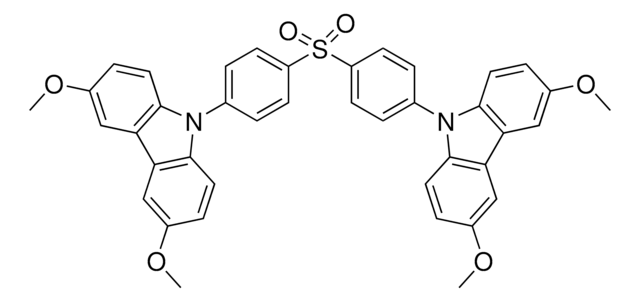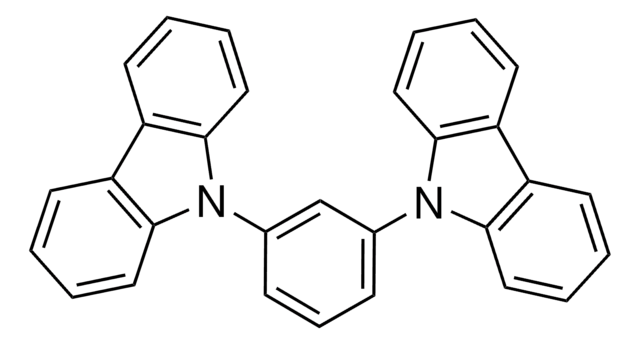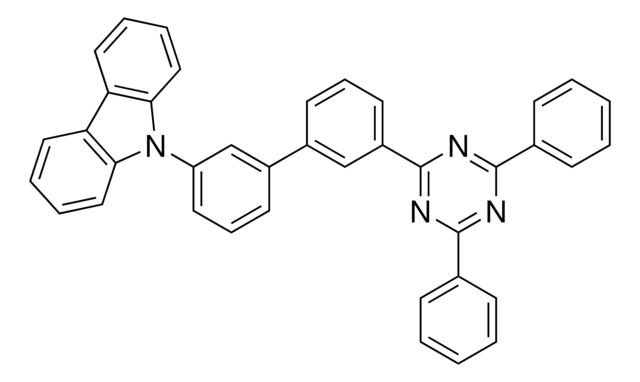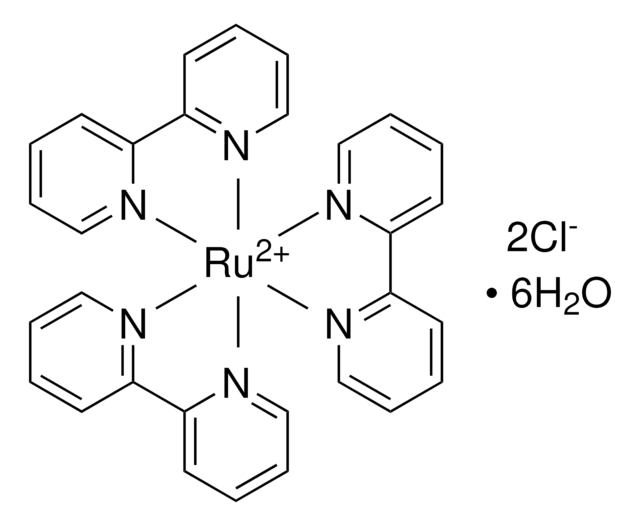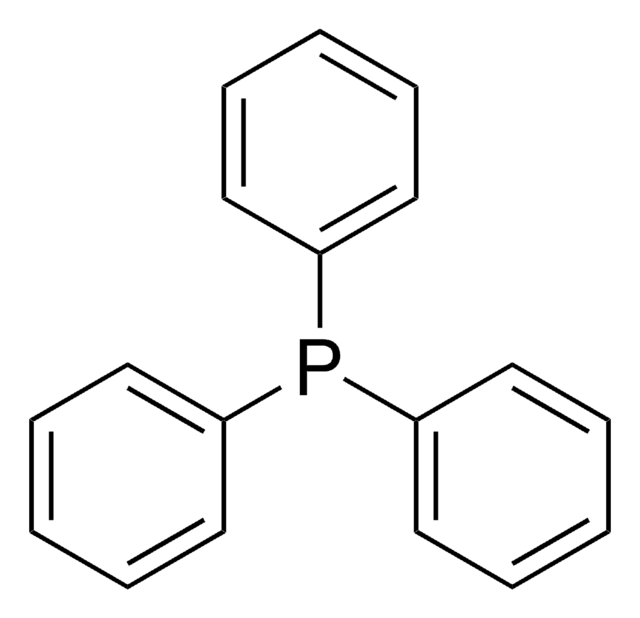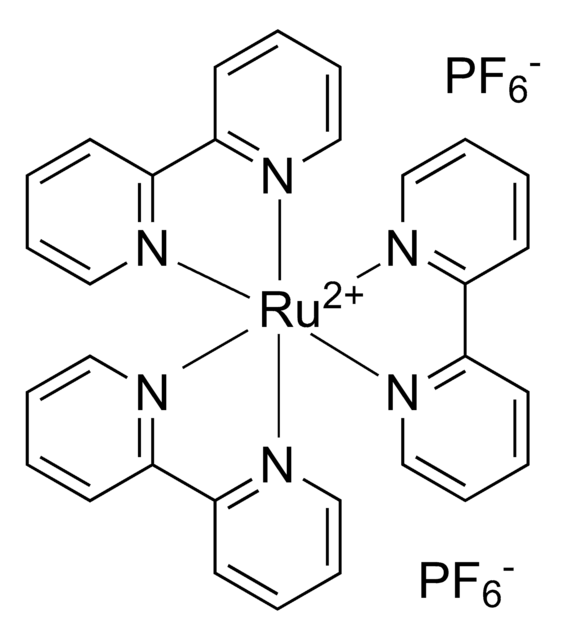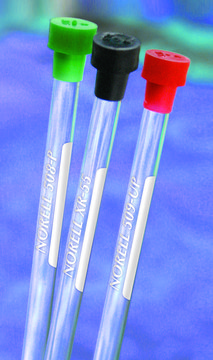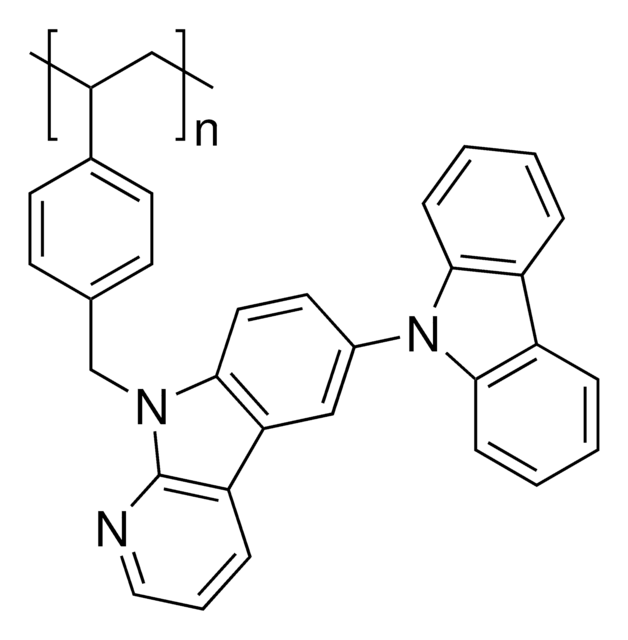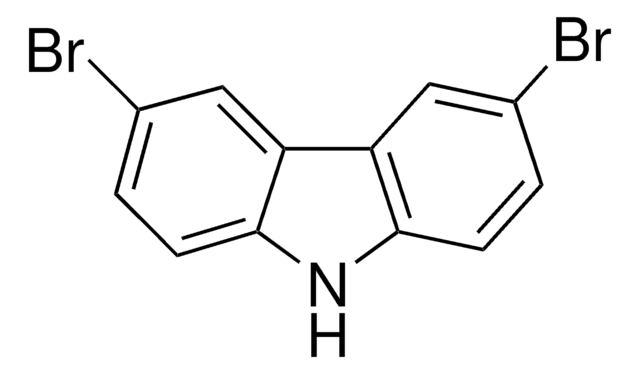932051
2,6-Bis(3-(9H-carbazol-9-yl)phenyl)pyridine
≥99% (HPLC)
Synonym(s):
26DCzPPy
About This Item
dichloromethane: soluble
toluene: soluble
Recommended Products
grade
sublimed grade
Quality Level
description
μh ≈ 1.0 x 10-5 cm2 V−1 s−1
μe ≈ 1.0 x 10-5 cm2 V−1 s−1
Assay
≥99% (HPLC)
loss
0.5% TGA, > 370 °C (weight loss)
solubility
chloroform: soluble
dichloromethane: soluble
toluene: soluble
fluorescence
λem 410 nm±10 nm in dichloromethane
Orbital energy
HOMO 6.05 eV
LUMO 2.56 eV
λ
in dichloromethane
UV absorption
λ: 239 nm±5 nm Amax
λ: 292 nm±5 nm Amax
SMILES string
C1(C2=CC=CC(N3C(C=CC=C4)=C4C5=C3C=CC=C5)=C2)=NC(C6=CC(N7C(C=CC=C8)=C8C9=C7C=CC=C9)=CC=C6)=CC=C1
InChI
1S/C41H27N3/c1-5-22-38-32(16-1)33-17-2-6-23-39(33)43(38)30-14-9-12-28(26-30)36-20-11-21-37(42-36)29-13-10-15-31(27-29)44-40-24-7-3-18-34(40)35-19-4-8-25-41(35)44/h1-27H
InChI key
UFWDOFZYKRDHPB-UHFFFAOYSA-N
Looking for similar products? Visit Product Comparison Guide
Related Categories
Application
Storage Class Code
11 - Combustible Solids
WGK
WGK 3
Flash Point(F)
Not applicable
Flash Point(C)
Not applicable
Regulatory Information
Choose from one of the most recent versions:
Certificates of Analysis (COA)
Don't see the Right Version?
If you require a particular version, you can look up a specific certificate by the Lot or Batch number.
Already Own This Product?
Find documentation for the products that you have recently purchased in the Document Library.
Our team of scientists has experience in all areas of research including Life Science, Material Science, Chemical Synthesis, Chromatography, Analytical and many others.
Contact Technical Service
